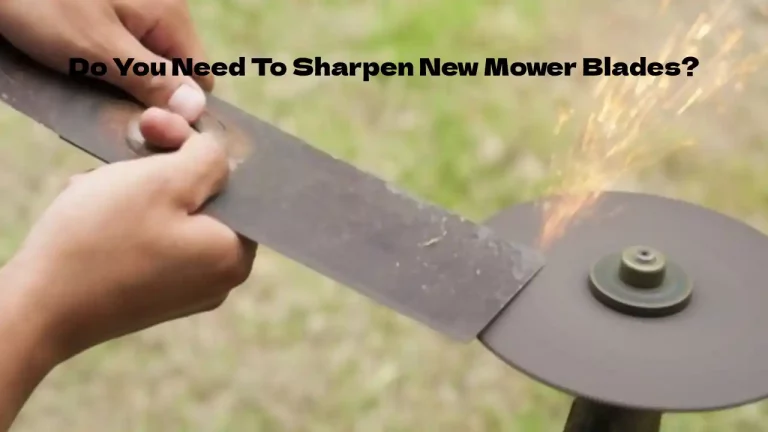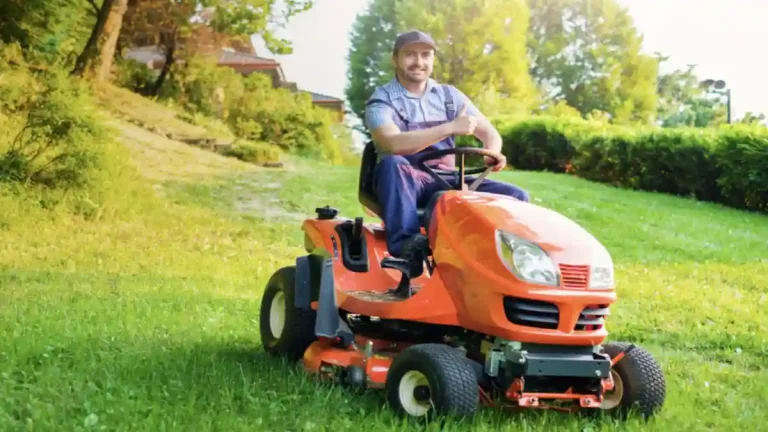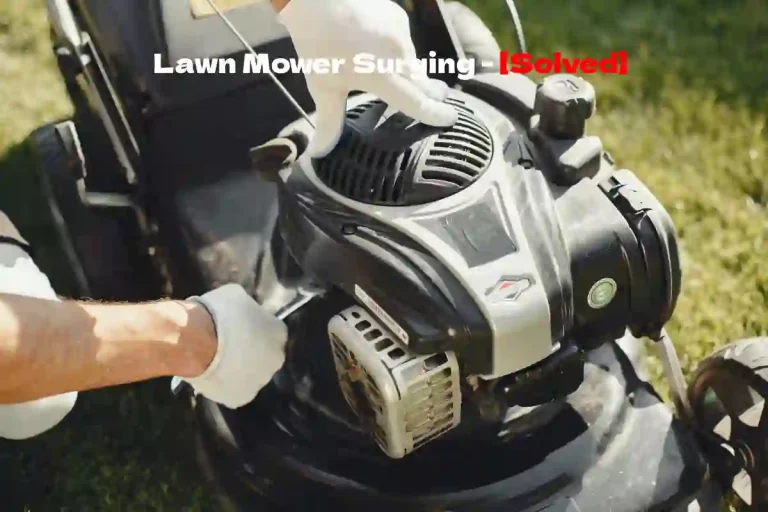A lawnmower is a piece of equipment that homeowners love and hate. It is a great partner in keeping the lawn in shape and looking good when working correctly. The opposite is true when it doesn’t deliver the goods, and nothing is more frustrating when it doesn’t work correctly.
A pull cord is a common problem area in some lawn mowers. The causes are easily identified and fixed. Common problems causing a mower pull cord not to catch are
- The Pull cord is damaged or broken
- Damaged pulley pawls
- Damaged pull cord pulley
- Pull recoil spring inside the mechanism has broken
Apart from the embarrassment of pulling the starter cord and flying backward because there is no resistance, it is also frustrating as nothing you do seems to get the lawnmower started.
This problem occurs more frequently on older lawnmowers that have had a hard life.
How Does The Recoil Starter Mechanism Work?
Unlike motor vehicles that can “bump” start when the battery is flat, or the starter motor is inoperative, there is no way to start a lawnmower with a pull cord that is not catching or is broken.
The following details how the pull cord starter recoil works in lawnmowers. The main components of a lawnmower recoil start system include:
- Starter Housing
- Pull cord
- Handle
- Pulley
- Flywheel receiver
- Crankshaft adaptor
- Pulley recoil spring
- Pulley cover
- Engaging Pawls
- Paul spring
- Flywheel pawl receiver
- Pull assembly housing
When the cord is pulled, the arms on the spring-loaded pawls extend and catch the crankshaft adaptor connected to the crankshaft.
As the crankshaft starts to spin, the two magnets on the flywheel generate a current in the coil, sending a large pulse of electrical current to the spark plug, causing it to create a spark between the electrodes.
Simultaneously a vacuum in the carburetor sucks gas from the carburetor bowl, mixes the gas with air, and pushes the combination into the combustion chamber. The spark plug ignites and causes the internal combustion process to commence.
The pulley recoil spring stretches out when the operator pulls the cord off the pulley and out of the engine. The recoil spring pulls the line back onto the pulley as the operator releases the cable. It allows the operator to continuously pull the rope to get the engine moving faster and faster. The recoil is now ready for the operator to try again.
What Can Cause Lawn Mower Pull Cord To Not Catch?
Most of the issues which cause a Lawnmower pull cord not to catch are as follows.
The Pull Cord Is Damaged Or Broken
If the pull cord is broken, it will not turn the starter recoil and therefore won’t turn the crankshaft adaptor, and the engine won’t begin the starting process.
It is far simpler to replace a cord that has started to fray rather than one that is broken.
To replace a frayed cord, work through the following steps.
- Remove the starter housing.
- Cut the length of the new cord to the same size as the old one. Don’t remove the old line yet.
- Pull the old starter cord out. Use a screwdriver or punch to lock the spokes of the pulley to stop it from retracting.
- Remove the old cord of the pulley and throw it away.
- Feed the replacement cord into the pulley and knot it.
- Fit the pull handle and tie a double knot to keep its place at the end of the cord.
- Remove the screwdriver and let the pulley retract.
- Refit the assembly into the starter housing.
If the cord is broken, you must rewind the pulley spring before attaching the new line to the pulley.
To calculate how many turns you need to wind the spring, wrap the cord around the pulley and add up the number of turns it takes to wind it up.
It is the number of turns you will have to make to load the pulley spring.
Damaged Pulley Pawls Will Prevent The Pull Cord From Catching
Pawls are installed on the pulley. When the pully is activated, they extend and connect the recoil starter to the engine.
Most manufacturers use pawls made of plastic that can wear down or break. If the pawls are damaged, they will not engage the flywheel receiver and so will not turn the engine over.
To check the condition of the pawls on the lawnmower, work through the following steps.
- Disconnect the spark plug. It is a good practice when working on a lawnmower because it prevents an accidental start.
- Remove the starter housing to reveal the assembly.
- Remove the center bolt and cap, which retain the pawls.
- Remove the pawls and check them for damage or excessive wear.
- Install the new pawls (by sliding them into the same position from which you removed the old ones.
- Replace the retaining bolt and cap.
- Replace the starter assembly and pull the cord to confirm it is engaging.
The pawls engage the flywheel receiver, usually a metal cup attached to the flywheel. Check the condition of the flywheel receiver because if it is worn, the pawls won’t be able to engage, and the engine will not catch.
With present-day lawnmowers, most flywheel receivers are made from metal; however, there is a move from some manufacturers to replace these with plastic parts, which will cause wear and damage rates to increase markedly.
A Damaged Pulley May Prevent The Pull Cord From Catching
The pull cord is attached to the pulley, retracting after being pulled, and is stored in the pulley.
Once again, these pulleys are made from plastic and are vulnerable to wear and damage.
A damaged pulley may prevent the rope from properly retracting, leaving the cord too short to enable a full-length pull of the starter.
It is not difficult to replace the pulley; however, it does involve removing the whole starter housing. Follow the steps below to replace the component.
- Remove the starter housing. It usually involves removing three of four bolts.
- Pull the starter rope out to its fullest extent and use a screwdriver to lock the spokes of the pulley to stop it from retracting.
- Take the rope off and remove the screwdriver to allow the pulley to retract.
- Undo the center bolt and the friction plate, allowing you to remove the pulley.
- Replace the pulley making sure you line it up correctly with the housing post.
- You need to rotate the pulley the same number of turns that released the spring.
- Use a screwdriver or punch to lock the spokes of the pulley to stop it from retracting.
- Attach the rope to the pulley and release the screwdriver to allow the rope to rewind into the pulley.
- Reinstall the starter housing and check if the problem is fixed.
The Pull Recoil Spring Inside The Mechanism Has Broken
If the pull recoil spring inside the starting mechanism is broken, the starter cord will not retract and be stored in the pulley.
If the spring has broken, it is advisable to buy a complete recoil starter unit. New units are not too expensive and are sold as total units, with loaded springs and cord attached.
Conclusion
The most likely culprit of a lawnmower pull cord not catching is worn or broken pawls. If your lawnmower has this problem, follow the steps listed above, and you will get to the source of the issue.
If manufacturers start to replace the metal flywheel receivers with plastic units, these will become a problem in the future.




![Why Does The Lawn Mower Leak Gas From The Air Filter? [Fix Easily in Seconds]](https://howtl.com/wp-content/uploads/2022/05/lawn-mower-leaking-768x432.webp)


